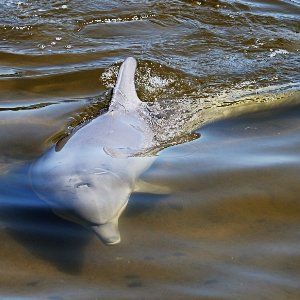ALWAYS SWIM BETWEEN THE FLAGS
There’s no doubt that Australia has some of the most amazing beaches in the world, but are you aware of just how dangerous they can be?
Beneath the shimmer of the ocean you can find sharks, jellyfish, sandbars and rip tides (underwater currents that can pull you out to sea), and that’s just for starters. All of which can present risks to accomplished swimmers and to those who are only paddling. In fact, it’s not unheard of for travellers to arrive in this wonderful country one day, ignore the warnings, and drown on the beach the next. Sad but true!
Don’t get me wrong, you can spend a lifetime in the Australian oceans and on the beaches, but you need to be aware to be safe. So here are some insights to keep in mind...
PATROLLED BEACHES
Where possible swim on patrolled beaches, this means ones with lifeguards around to offer help and advice if you need it. Lifeguards are all highly trained and experienced.
Once at a patrolled beaches it’s important to keep an eye on the signs put up by the lifeguards because this is their way of keeping you up-to-date with the ever-changing risks.
If you see a sign saying the beach is closed, for example, it means that something has happened to make the waters unsafe. It could be due to rips, shark sightings, the jellyfish, or something equally as challenging, either way it means ‘stay out of the water!’
‘Stay between the flags’ is a common phrase on Australian beaches and simply refers to the life-guards’ red and yellow flags. These are placed along the edges of the best areas for you to swim - but don’t surf here, for that you need to stay between the black and white checkered flags. Surfboards and swimmers don’t always mix well in the water!
Life-guards will also use whistles, loud speakers, and hand-signals to warn you of risks. They will also be looking out for people who are in trouble, but if you are the water and find yourself needing help the signal to get their attention is to raise your arm above your head and wave from side to side.
UNPATROLLED BEACHES
If you choose to go to a more isolated beach, don’t go alone. Plus be aware that if you do get into trouble there may not be phone reception and it will take longer for help to get to you.
Also, never dive into an unfamiliar area. While the water may look clear and deep, there’s always a risk of spinal damage from sandbars hidden just below the waves.

JELLYFISH
You’ll find a variety of jellyfish in our oceans, the most common are the:
- Blue Bottle
(or Bluey) - This is small and blue, and although a bite from them will hurt, it won’t kill you.
- Box Jellyfish
(or Stinger) - These are transparent and are therefore hard to spot in the water. Their sting is painful and can be lethal, so always get immediate medical attention.
- Irukandji (or Stinger) - This is small and transparent, and like the Box Jellyfish can be lethal so requires immediate attention.
SHARKS
Yes, we have sharks, and if you’re swimming in the oceans you need to be aware of them - even if you’re swimming near a beach. There are a variety of systems in place to lessen the chance of attacks (including shark-tracking drones and shark barriers), but the best action is always to be sensible enough to swim in groups close to a patrolled beach and to be aware of alerts.
SUN SMART
It may sound silly because we all know that Australia is hot, right? But the definition of ‘hot’ in a cool country is often different from the definition of ‘hot’ in sunny country. Which means, don’t underestimate the heat because nobody wants to spoil a trip here by having to deal with sunburn and dehydration.
So… always remember to Slip, slop, slap! This means slip on a shirt, slop on some sunscreen (usually water-proof and 30+) and slap on a hat. It’s also wise, if you can, to stay out of the sun between 10am and 2pm and drink plenty of water.
MORE ARTICLES TO COME,
CALL BACK SOON!
